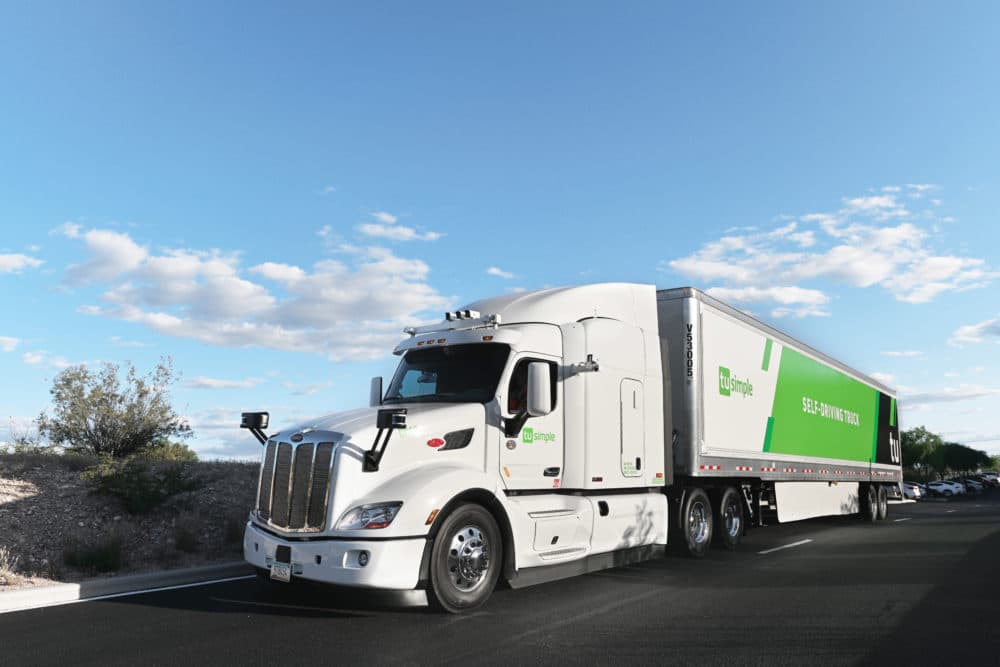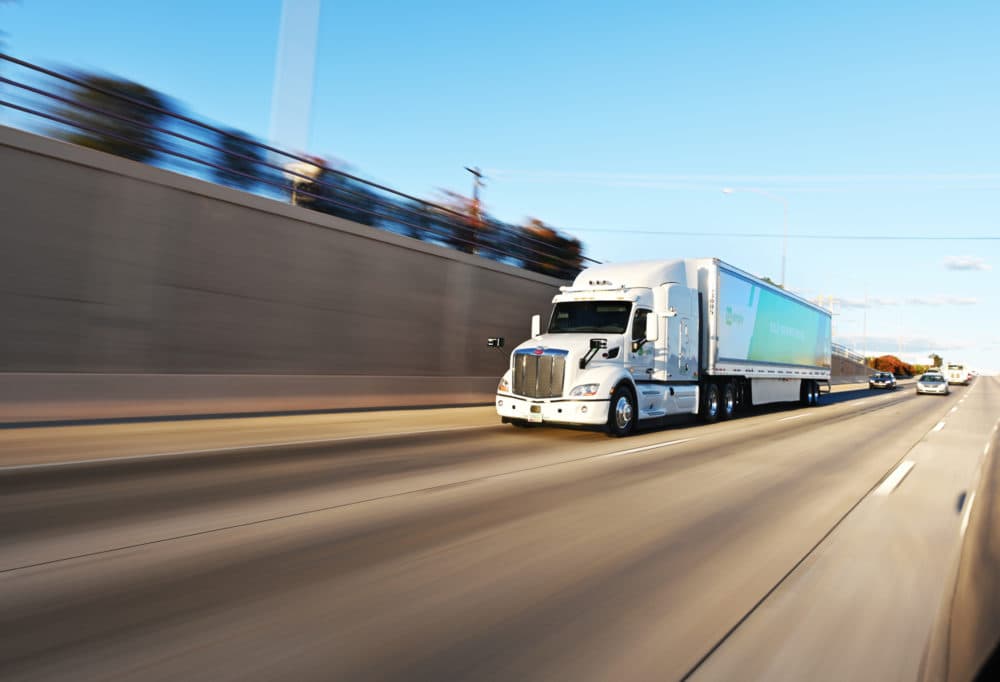Advertisement
The U.S. Postal Service Wants Your Mail Trucks To Drive Themselves

The United States Postal Service has launched a pilot program for self-driving trucks to move mail over a 1,000-mile route between Dallas and Phoenix.
The trucks have already completed their first run, and their second set of deliveries is now underway, according to Chuck Price, chief product officer for TuSimple, the startup that developed the trucks used in the pilot.
“So far, we are ahead of schedule,” he tells Here & Now’s Peter O’Dowd.
The program comes as the industry faces a growing truck driver shortage and a loss of revenue. In 2013, the Postal Service had a net loss of $3.9 billion, and in 2012, it lost $15.9 billion. Price says autonomous trucks will help alleviate both problems.
“This type of technology saves dramatically on the operating cost of operating a vehicle,” says Price. “It's also very fuel efficient. So, we save fuel, and that has of course multiple benefits: It saves you money, and it saves the environment.”
How the system works is 18-wheel Peterbilt 579 tractor-trailers leave Dallas and Phoenix simultaneously, completing the route from both directions. The vehicles operate autonomously, but a safety team of drivers and engineers remains on board, as the trucks stop periodically to swap out personnel.
The trucks travel to distribution centers via major highways in Arizona, New Mexico and Texas — avoiding densely populated areas altogether.
“It is quite impractical to operate — regularly operate — large tractor-trailers in city centers themselves,” he says. “So, our sweet spot is to be moving from distribution to distribution center.”

Normally, it would be difficult to recruit drivers for such a long journey, because it requires working multiple long days and nights. With self-driving cabs, though, the route is far more manageable, making the Texas-to-Arizona route “the sweet spot for autonomy,” says Price.
“This is something that is very well-adapted for autonomy,” he says.
By the end of 2020 or early 2021, Price expects to run a commercial truck devoid of all human personnel. As to whether this will pose a threat to current truck drivers’ jobs, he says drivers can rest assured.
“We don't believe that this will disrupt existing jobs,” he says. “We believe that this will supplant what is currently a very significant driver shortage.
“Today, there are 50,000 drivers missing from the system. By 2024, it is projected to be upwards of a 175,000- to 200,000-driver shortage.”
Francesca Paris produced this interview and edited it for broadcast with Todd Mundt. Jackson Cote adapted it for the web.
This segment aired on May 24, 2019.

